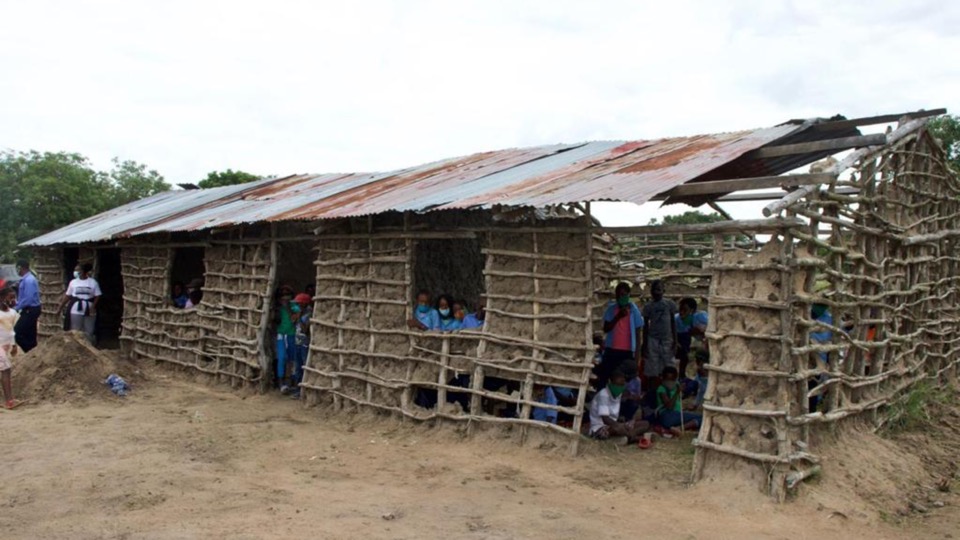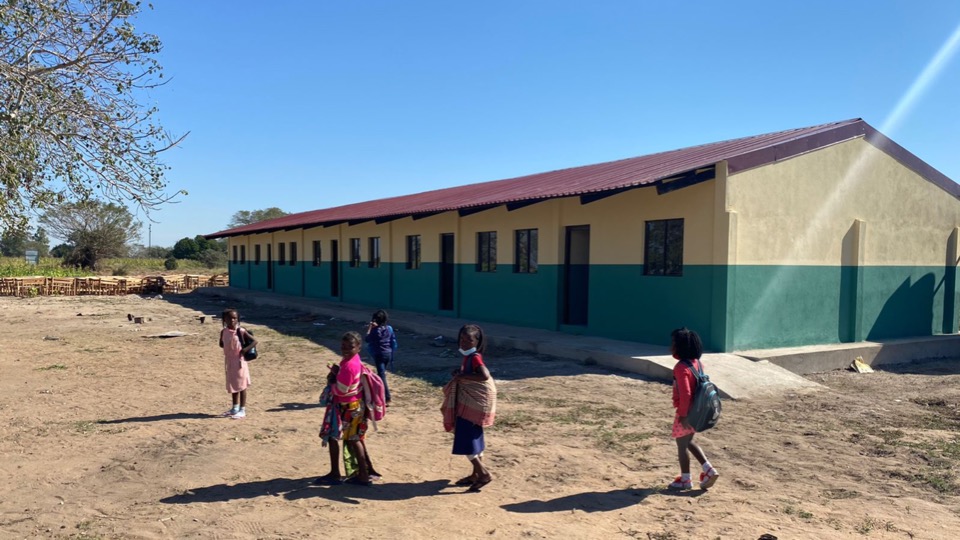The Church and partners are replacing makeshift classrooms in under-privileged schools with brick and mortar buildings to help improve education.
Hundreds of students across Maputo province can now learn comfortably after The Church of Jesus Christ of Latter-Day Saints built new and functional classrooms in Mozambique.
The projects were in partnership with No Poor Among Us, a non-profit organization headed by Josh Phillips, who served his mission for the Church in Mozambique years ago.
The country faces challenges with education. Although 94% of girls in Mozambique enroll in primary school, more than half drop out by grade five, only 11% continue to study at secondary level, and just 1% continue to college, according to The United States Agency for International Development, an independent agency that is responsible for administering civilian foreign aid and development assistance. Among students who finish primary school, nearly two-thirds leave the system without basic reading, writing, and math skills, which worried Phillips.
Concerned about overcrowding and lack of infrastructure in schools – factors that are affecting the educational quality of hundreds of students in Mozambique -- Phillips sought the help of The Church of Jesus Christ of Latter-Day Saints. Soon after, Phillip Moatlodi, the Africa South Area Welfare self-reliance manager, visited various school sites with Provincial educational dignitaries, to assess the severity of the schools.
The first project they tackled was the Matole Gare Primary School. “The conditions prior to the start of the project were not ideal,” Moatlodi commented. “The parents had started to construct two classrooms to improve the conditions of their children, however, because of the impact of Covid-19 they were not able to complete the classrooms.”
Private donors funded the construction of three classrooms and the Church funded a further two. Like a domino effect, the Church and No Poor Among Us began to identify other schools that needed assistance, after that. A small, struggling school in the rural area of Mahubo was assisted with five new classrooms. About 900 additional students can now be accommodated thanks to this effort.
‘Every time it rained the school would have to be rebuilt’

Magude-Primary-School-Dilapidated-Classroom
Children learning in a dilapidated makeshift classroom at Magude Primary School in Maputo, Mozambique© 2022 by Intellectual Reserve, Inc. All rights reserved.Another school assisted was Magude Primary School. “The kids at the primary school were learning in a mud school,” says Phillips. “Every time it rained the school would fall and the school would have to rebuild. As a result, the students lost more than half of their school days, every year.”

Magude-Primary-School-New-Classrooms
Children in front of the newly built classrooms at Magude Primary School in Maputo, Mozambique© 2022 by Intellectual Reserve, Inc. All rights reserved.The Church was able to replace the makeshift buildings with brick and mortar classrooms, and build bathrooms as well.
Then there was Picoco Primary School, where 1,300 children were being taught from just three classrooms. “The story of these children and just three classrooms is a touching one,” says Gilberto Albano Chiburee, the director of the school. Originally, the school’s three classrooms accommodated its 200 students. “But over a short space of time, our community flourished in numbers,” said Chiburee.
The number of students kept increasing. The Primary School was strained to evenly distribute students into three sessions, the first group in the morning, the second group in the afternoon, and the third group of students in the evening.
‘We used trees as makeshift classrooms’
When the number of students passed the 500 mark, Chiburee and his faculty of teachers knew that they had to do something different. They approached non-profit organisations, government and corporates to ask for assistance, but to no avail.
.jpeg)
Picoco-Primary-School-classroom-under-a-tree
Children learning under a tree at Picoco Primary School in Maputo, Mozambique.So Chiburee and his staff started planting trees. “We used these trees as makeshift classrooms because we did not have any other option. We had sought the help of various companies, non-profit organizations, and the government but to no avail,” Chiburee commented.
This predicament only made matters worse when the number of students enrolling in the school kept hiking. The first and second graders were prioritized to learn in classrooms, while third up to seventh graders learned under trees.
“It broke my heart to have children arrive as early as 6 am only to sit on the hard and uncomfortable ground until noon. Some of the children started experiencing back problems,” an emotional Chiburee opened up. The Church of Jesus Christ of Latter-day Saints, along with No Poor Among Us, then heard about the school and arranged to construct five new classrooms.
The news about the construction of five new classrooms was received with great excitement, many thanks, and tears from teachers, students, and locals. Chiburee expressed how thankful he was that no student of the school would be sent home as a result of rain or the wind.
The project is expected to be completed by the end of June this year. An additional 900 students will be accommodated. “The Church and No Poor have provided space for 2 340 students to study in so far,” says Phillips. “The Church has also provided spaces for thousands of others in additional projects in Mozambique where they dealt directly with the schools.”